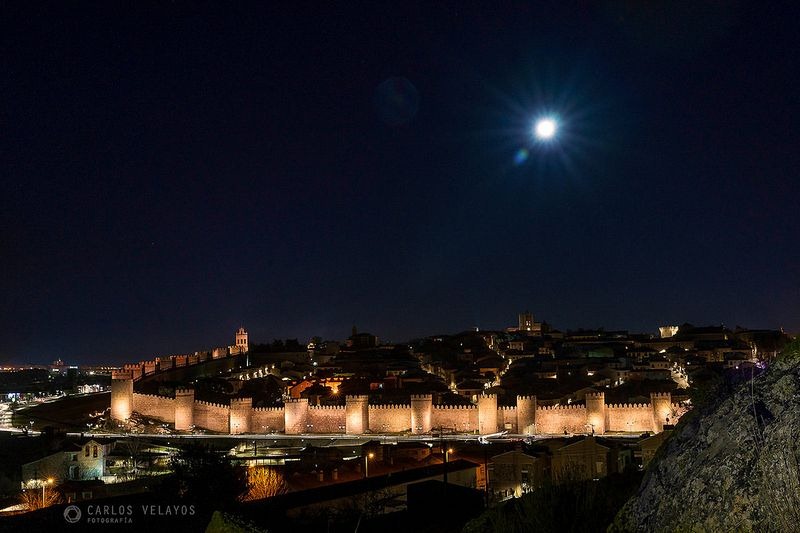In central Spain, there’s an ancient city Avila located in the autonomous community of Castile and Leon almost 100 km to the west of Madrid. It is believed and considered one of the finest walled cities in Europe, built on the flat summit of a rocky outcrop, actually rises rapidly in the middle of a vast treeless plain strewn with immense grey boulders and surrounded by lofty mountains. In 1985, The Old Town of Avila was included in the list of UNESCO World Heritage Sites. Therefore, Ávila has been called the “finest medieval remnant in Spain” and is a noteworthy tourist center.
The wall of Avila is an inspiring 2.5 km barrier of stone and granite that surrounds the city’s almost rectangular layout. The 2,500-meter-long city wall is completely intact. The walls are up to 10 feet thick and 40 feet high, and topped by a continuous battlement rampart-walk and parapet with merlons and crenels. Nowadays it is possible to walk upon the walls for approximately half their circumference, however at night the whole circumference of the wall is magnificently lit up by yellow-orange halogen lights, making it “the largest fully illuminated monument in the world,”
History reveals to us, that Avila was once part of the Roman Lusitania, before falling to the Arab and Berber invaders in 714 CE. Hence, for the next three and a half centuries, the northern Iberian Christian kingdoms tried frequently to seize control of the city, but it was King Alfonso VI of León and Castile, who sooner or later managed to conquer the Muslims in 1088 ADE.
The King instantly started building a great stone wall around Avila to defend his latest conquest from further attacks. Moreover, the task was well supervised by his brother-in-law, “Raymond of Burgundy”, who was a legendary figure himself. Due to its early legal protection, the city of Ávila maintains the main features of authenticity in terms of form, design, location, and setting.
Furthermore, bulging out from the walls are eighty-eight semi-circular defensive towers, placed at uniform intervals. The walls are punctured by 8 or 9 entrance gates, but originally, there was a moat and a barbican outside the walls, but they no longer exist. The substantial fortification was finished in less than a decade.
Besides, The area surrounded by the walls is now designated the Old Town and covers all of the city’s historic landmarks including the Gothic cathedral, the Convent of Santo Tomás, containing the tombs of Tomás de Torquemada, which were the first grand inquisitor of Spain, and of Don Juan, the only son of Ferdinand and Isabella, and several Romanesque churches.
Also, Read – Kaali Meteor Crater of Estonia
Source: Amusing Planet



















